Junfeng Chen
DEXTER-LLM: Dynamic and Explainable Coordination of Multi-Robot Systems in Unknown Environments via Large Language Models
Aug 20, 2025Abstract:Online coordination of multi-robot systems in open and unknown environments faces significant challenges, particularly when semantic features detected during operation dynamically trigger new tasks. Recent large language model (LLMs)-based approaches for scene reasoning and planning primarily focus on one-shot, end-to-end solutions in known environments, lacking both dynamic adaptation capabilities for online operation and explainability in the processes of planning. To address these issues, a novel framework (DEXTER-LLM) for dynamic task planning in unknown environments, integrates four modules: (i) a mission comprehension module that resolves partial ordering of tasks specified by natural languages or linear temporal logic formulas (LTL); (ii) an online subtask generator based on LLMs that improves the accuracy and explainability of task decomposition via multi-stage reasoning; (iii) an optimal subtask assigner and scheduler that allocates subtasks to robots via search-based optimization; and (iv) a dynamic adaptation and human-in-the-loop verification module that implements multi-rate, event-based updates for both subtasks and their assignments, to cope with new features and tasks detected online. The framework effectively combines LLMs' open-world reasoning capabilities with the optimality of model-based assignment methods, simultaneously addressing the critical issue of online adaptability and explainability. Experimental evaluations demonstrate exceptional performances, with 100% success rates across all scenarios, 160 tasks and 480 subtasks completed on average (3 times the baselines), 62% less queries to LLMs during adaptation, and superior plan quality (2 times higher) for compound tasks. Project page at https://tcxm.github.io/DEXTER-LLM/
DUE: A Deep Learning Framework and Library for Modeling Unknown Equations
Apr 14, 2025Abstract:Equations, particularly differential equations, are fundamental for understanding natural phenomena and predicting complex dynamics across various scientific and engineering disciplines. However, the governing equations for many complex systems remain unknown due to intricate underlying mechanisms. Recent advancements in machine learning and data science offer a new paradigm for modeling unknown equations from measurement or simulation data. This paradigm shift, known as data-driven discovery or modeling, stands at the forefront of AI for science, with significant progress made in recent years. In this paper, we introduce a systematic framework for data-driven modeling of unknown equations using deep learning. This versatile framework is capable of learning unknown ODEs, PDEs, DAEs, IDEs, SDEs, reduced or partially observed systems, and non-autonomous differential equations. Based on this framework, we have developed Deep Unknown Equations (DUE), an open-source software package designed to facilitate the data-driven modeling of unknown equations using modern deep learning techniques. DUE serves as an educational tool for classroom instruction, enabling students and newcomers to gain hands-on experience with differential equations, data-driven modeling, and contemporary deep learning approaches such as FNN, ResNet, generalized ResNet, operator semigroup networks (OSG-Net), and Transformers. Additionally, DUE is a versatile and accessible toolkit for researchers across various scientific and engineering fields. It is applicable not only for learning unknown equations from data but also for surrogate modeling of known, yet complex, equations that are costly to solve using traditional numerical methods. We provide detailed descriptions of DUE and demonstrate its capabilities through diverse examples, which serve as templates that can be easily adapted for other applications.
IU4Rec: Interest Unit-Based Product Organization and Recommendation for E-Commerce Platform
Feb 11, 2025Abstract:Most recommendation systems typically follow a product-based paradigm utilizing user-product interactions to identify the most engaging items for users. However, this product-based paradigm has notable drawbacks for Xianyu~\footnote{Xianyu is China's largest online C2C e-commerce platform where a large portion of the product are post by individual sellers}. Most of the product on Xianyu posted from individual sellers often have limited stock available for distribution, and once the product is sold, it's no longer available for distribution. This result in most items distributed product on Xianyu having relatively few interactions, affecting the effectiveness of traditional recommendation depending on accumulating user-item interactions. To address these issues, we introduce \textbf{IU4Rec}, an \textbf{I}nterest \textbf{U}nit-based two-stage \textbf{Rec}ommendation system framework. We first group products into clusters based on attributes such as category, image, and semantics. These IUs are then integrated into the Recommendation system, delivering both product and technological innovations. IU4Rec begins by grouping products into clusters based on attributes such as category, image, and semantics, forming Interest Units (IUs). Then we redesign the recommendation process into two stages. In the first stage, the focus is on recommend these Interest Units, capturing broad-level interests. In the second stage, it guides users to find the best option among similar products within the selected Interest Unit. User-IU interactions are incorporated into our ranking models, offering the advantage of more persistent IU behaviors compared to item-specific interactions. Experimental results on the production dataset and online A/B testing demonstrate the effectiveness and superiority of our proposed IU-centric recommendation approach.
Positional Knowledge is All You Need: Position-induced Transformer for Operator Learning
May 15, 2024Abstract:Operator learning for Partial Differential Equations (PDEs) is rapidly emerging as a promising approach for surrogate modeling of intricate systems. Transformers with the self-attention mechanism$\unicode{x2013}$a powerful tool originally designed for natural language processing$\unicode{x2013}$have recently been adapted for operator learning. However, they confront challenges, including high computational demands and limited interpretability. This raises a critical question: Is there a more efficient attention mechanism for Transformer-based operator learning? This paper proposes the Position-induced Transformer (PiT), built on an innovative position-attention mechanism, which demonstrates significant advantages over the classical self-attention in operator learning. Position-attention draws inspiration from numerical methods for PDEs. Different from self-attention, position-attention is induced by only the spatial interrelations of sampling positions for input functions of the operators, and does not rely on the input function values themselves, thereby greatly boosting efficiency. PiT exhibits superior performance over current state-of-the-art neural operators in a variety of complex operator learning tasks across diverse PDE benchmarks. Additionally, PiT possesses an enhanced discretization convergence feature, compared to the widely-used Fourier neural operator.
Accelerated K-Serial Stable Coalition for Dynamic Capture and Resource Defense
May 25, 2023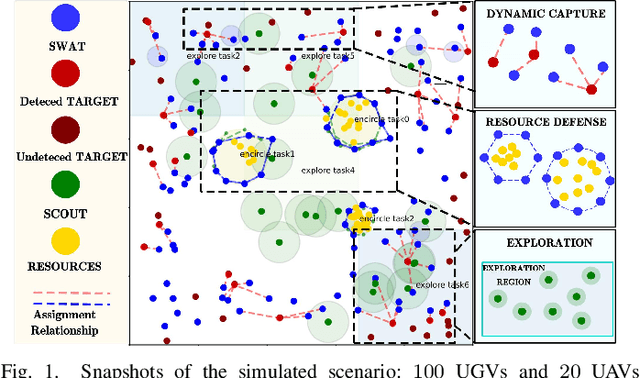
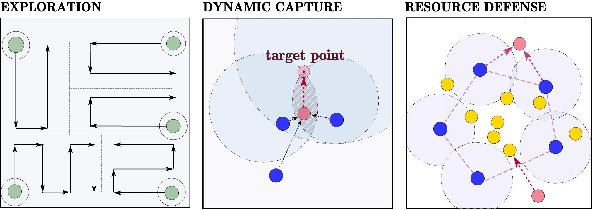
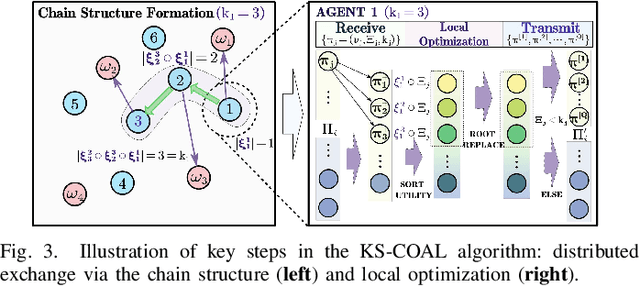
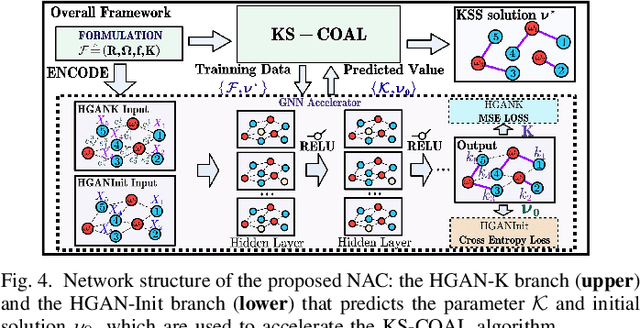
Abstract:Coalition is an important mean of multi-robot systems to collaborate on common tasks. An effective and adaptive coalition strategy is essential for the online performance in dynamic and unknown environments. In this work, the problem of territory defense by large-scale heterogeneous robotic teams is considered. The tasks include surveillance, capture of dynamic targets, and perimeter defense over valuable resources. Since each robot can choose among many tasks, it remains a challenging problem to coordinate jointly these robots such that the overall utility is maximized. This work proposes a generic coalition strategy called K-serial stable coalition algorithm (KS-COAL). Different from centralized approaches, it is distributed and anytime, meaning that only local communication is required and a K-serial Nash-stable solution is ensured. Furthermore, to accelerate adaptation to dynamic targets and resource distribution that are only perceived online, a heterogeneous graph attention network (HGAN)-based heuristic is learned to select more appropriate parameters and promising initial solutions during local optimization. Compared with manual heuristics or end-to-end predictors, it is shown to both improve online adaptability and retain the quality guarantee. The proposed methods are validated rigorously via large-scale simulations with hundreds of robots, against several strong baselines including GreedyNE and FastMaxSum.
Combinatorial-hybrid Optimization for Multi-agent Systems under Collaborative Tasks
May 22, 2023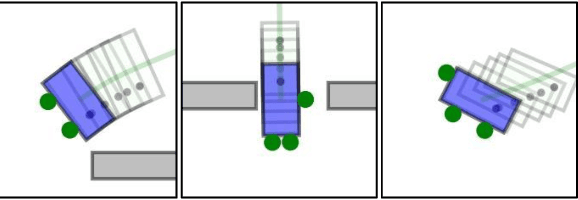

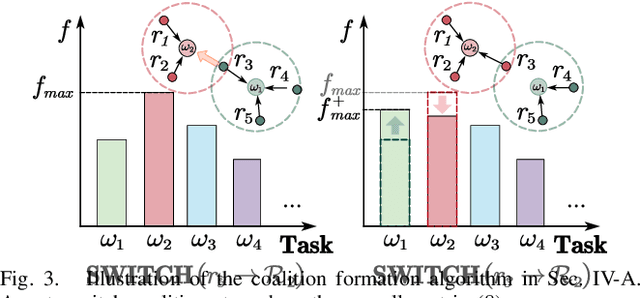

Abstract:Multi-agent systems can be extremely efficient when working concurrently and collaboratively, e.g., for transportation, maintenance, search and rescue. Coordination of such teams often involves two aspects: (i) selecting appropriate sub-teams for different tasks; (ii) designing collaborative control strategies to execute these tasks. The former aspect can be combinatorial w.r.t. the team size, while the latter requires optimization over joint state-spaces under geometric and dynamic constraints. Existing work often tackles one aspect by assuming the other is given, while ignoring their close dependency. This work formulates such problems as combinatorial-hybrid optimizations (CHO), where both the discrete modes of collaboration and the continuous control parameters are optimized simultaneously and iteratively. The proposed framework consists of two interleaved layers: the dynamic formation of task coalitions and the hybrid optimization of collaborative behaviors. Overall feasibility and costs of different coalitions performing various tasks are approximated at different granularities to improve the computational efficiency. At last, a Nash-stable strategy for both task assignment and execution is derived with provable guarantee on the feasibility and quality. Two non-trivial applications of collaborative transportation and dynamic capture are studied against several baselines.
Deep-OSG: A deep learning approach for approximating a family of operators in semigroup to model unknown autonomous systems
Feb 07, 2023Abstract:This paper proposes a novel deep learning approach for approximating evolution operators and modeling unknown autonomous dynamical systems using time series data collected at varied time lags. It is a sequel to the previous works [T. Qin, K. Wu, and D. Xiu, J. Comput. Phys., 395:620--635, 2019], [K. Wu and D. Xiu, J. Comput. Phys., 408:109307, 2020], and [Z. Chen, V. Churchill, K. Wu, and D. Xiu, J. Comput. Phys., 449:110782, 2022], which focused on learning single evolution operator with a fixed time step. This paper aims to learn a family of evolution operators with variable time steps, which constitute a semigroup for an autonomous system. The semigroup property is very crucial and links the system's evolutionary behaviors across varying time scales, but it was not considered in the previous works. We propose for the first time a framework of embedding the semigroup property into the data-driven learning process, through a novel neural network architecture and new loss functions. The framework is very feasible, can be combined with any suitable neural networks, and is applicable to learning general autonomous ODEs and PDEs. We present the rigorous error estimates and variance analysis to understand the prediction accuracy and robustness of our approach, showing the remarkable advantages of semigroup awareness in our model. Moreover, our approach allows one to arbitrarily choose the time steps for prediction and ensures that the predicted results are well self-matched and consistent. Extensive numerical experiments demonstrate that embedding the semigroup property notably reduces the data dependency of deep learning models and greatly improves the accuracy, robustness, and stability for long-time prediction.
MultiRoboLearn: An open-source Framework for Multi-robot Deep Reinforcement Learning
Sep 28, 2022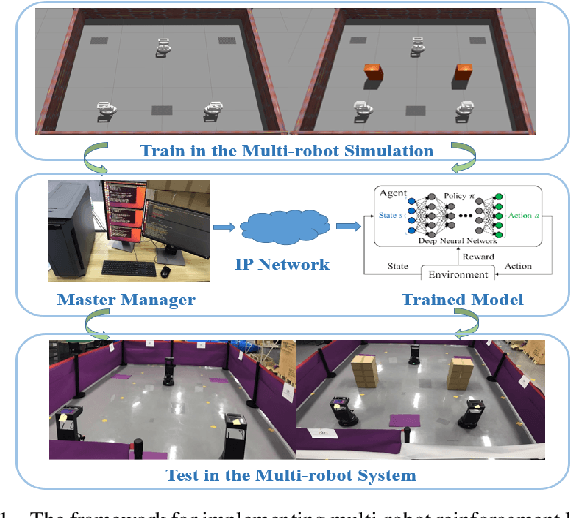
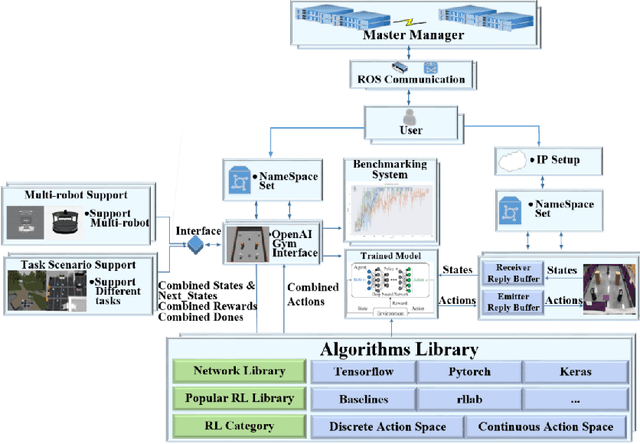
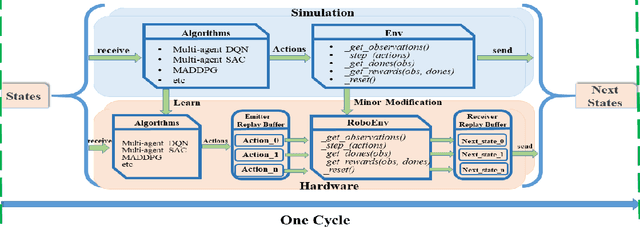
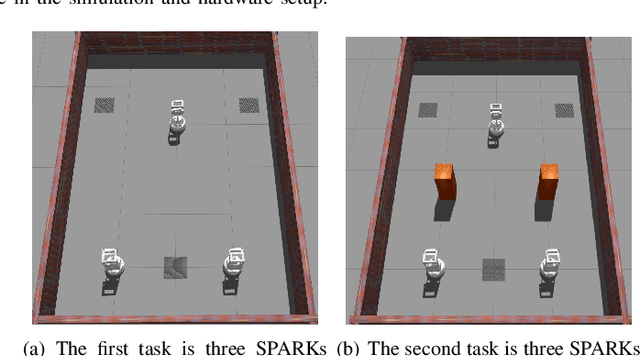
Abstract:It is well known that it is difficult to have a reliable and robust framework to link multi-agent deep reinforcement learning algorithms with practical multi-robot applications. To fill this gap, we propose and build an open-source framework for multi-robot systems called MultiRoboLearn1. This framework builds a unified setup of simulation and real-world applications. It aims to provide standard, easy-to-use simulated scenarios that can also be easily deployed to real-world multi-robot environments. Also, the framework provides researchers with a benchmark system for comparing the performance of different reinforcement learning algorithms. We demonstrate the generality, scalability, and capability of the framework with two real-world scenarios2 using different types of multi-agent deep reinforcement learning algorithms in discrete and continuous action spaces.
Abnormal Occupancy Grid Map Recognition using Attention Network
Oct 18, 2021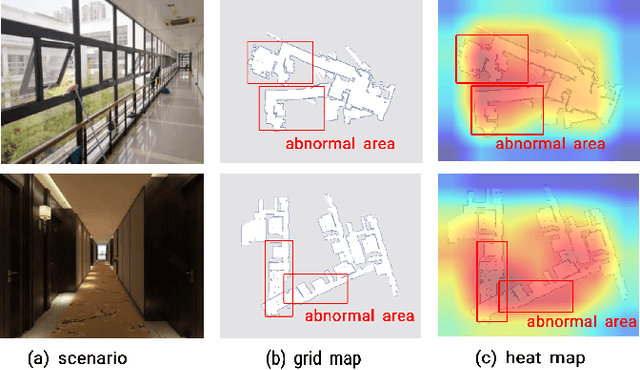
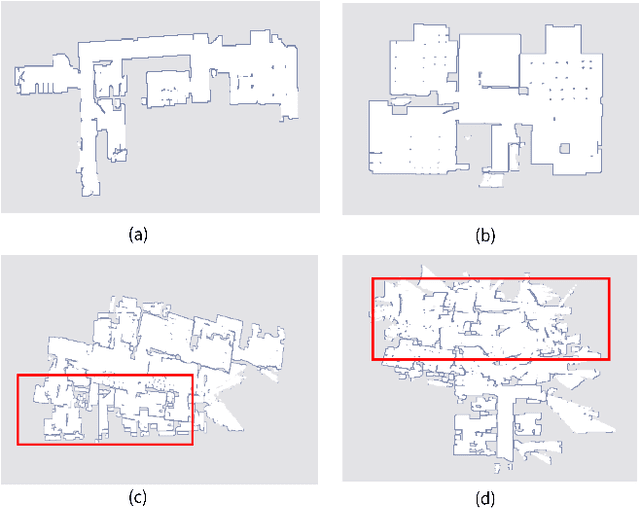

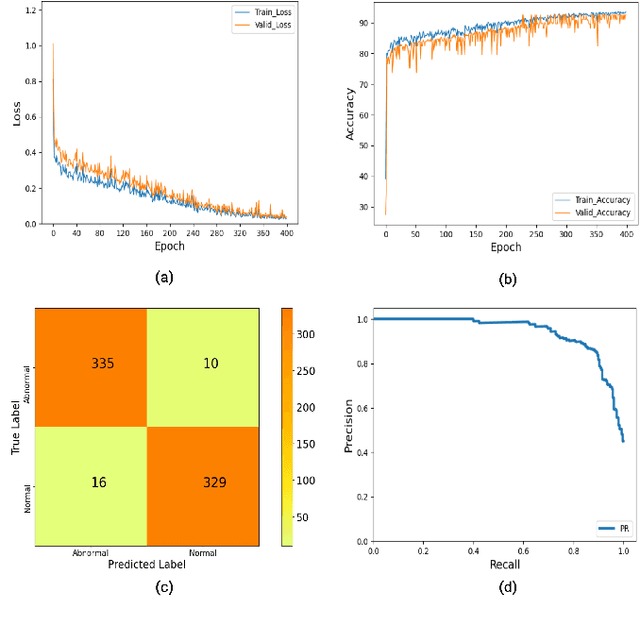
Abstract:The occupancy grid map is a critical component of autonomous positioning and navigation in the mobile robotic system, as many other systems' performance depends heavily on it. To guarantee the quality of the occupancy grid maps, researchers previously had to perform tedious manual recognition for a long time. This work focuses on automatic abnormal occupancy grid map recognition using the residual neural networks and a novel attention mechanism module. We propose an effective channel and spatial Residual SE(csRSE) attention module, which contains a residual block for producing hierarchical features, followed by both channel SE (cSE) block and spatial SE (sSE) block for the sufficient information extraction along the channel and spatial pathways. To further summarize the occupancy grid map characteristics and experiment with our csRSE attention modules, we constructed a dataset called occupancy grid map dataset (OGMD) for our experiments. On this OGMD test dataset, we tested few variants of our proposed structure and compared them with other attention mechanisms. Our experimental results show that the proposed attention network can infer the abnormal map with state-of-the-art (SOTA) accuracy of 96.23% for abnormal occupancy grid map recognition.
FEANet: Feature-Enhanced Attention Network for RGB-Thermal Real-time Semantic Segmentation
Oct 18, 2021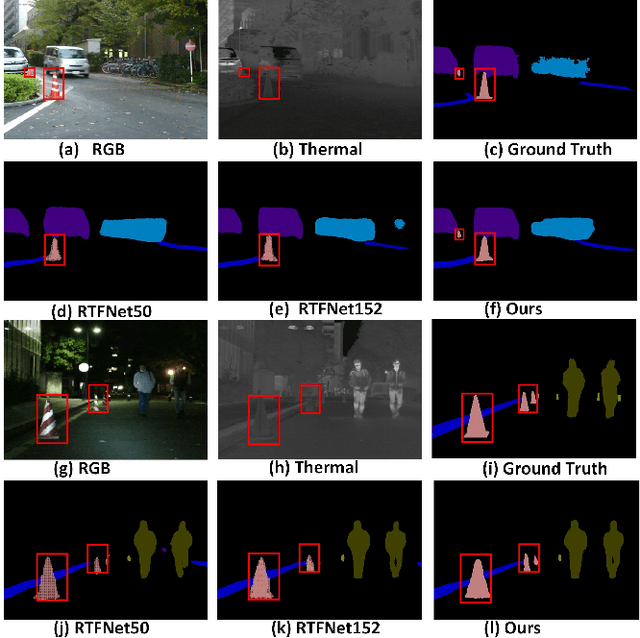
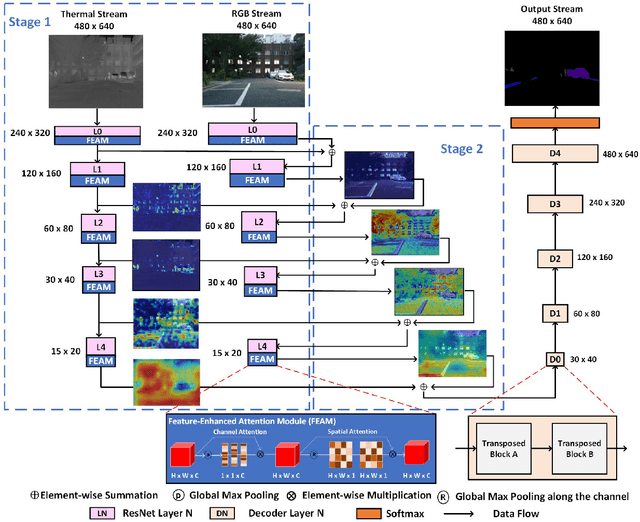
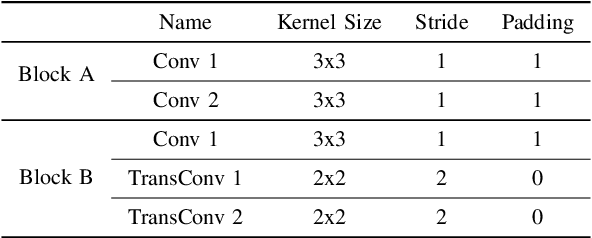
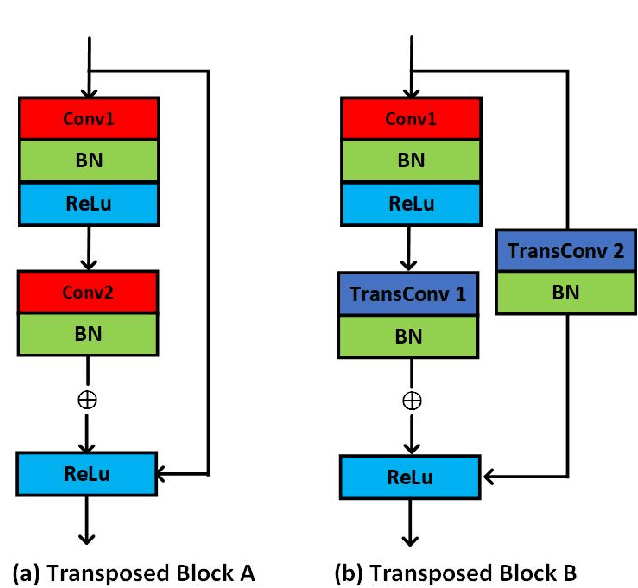
Abstract:The RGB-Thermal (RGB-T) information for semantic segmentation has been extensively explored in recent years. However, most existing RGB-T semantic segmentation usually compromises spatial resolution to achieve real-time inference speed, which leads to poor performance. To better extract detail spatial information, we propose a two-stage Feature-Enhanced Attention Network (FEANet) for the RGB-T semantic segmentation task. Specifically, we introduce a Feature-Enhanced Attention Module (FEAM) to excavate and enhance multi-level features from both the channel and spatial views. Benefited from the proposed FEAM module, our FEANet can preserve the spatial information and shift more attention to high-resolution features from the fused RGB-T images. Extensive experiments on the urban scene dataset demonstrate that our FEANet outperforms other state-of-the-art (SOTA) RGB-T methods in terms of objective metrics and subjective visual comparison (+2.6% in global mAcc and +0.8% in global mIoU). For the 480 x 640 RGB-T test images, our FEANet can run with a real-time speed on an NVIDIA GeForce RTX 2080 Ti card.
 Add to Chrome
Add to Chrome Add to Firefox
Add to Firefox Add to Edge
Add to Edge